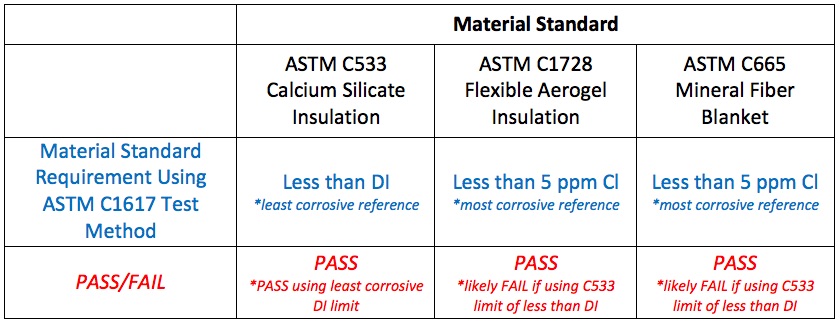In the slew of data that inundates us every day, it is often easier to simply accept the conclusions than it is to explore the data ourselves. While this may save time, understanding the conclusions and what they mean is an essential part of the decision making process, as taking the conclusion at face value without the correct context can often be misleading. A good example of this is a golf handicap. Just by looking at the net scores, two golfers could seem evenly matched; however, once we take the handicap into account, any discrepancies between the golfers’ skills will become much more apparent.
In order to make justifiable conclusions about the proficiency of a golfer, having a complete understanding about how the score was calculated is essential. Similarly, when it comes to insulation specifications and data reporting, having a complete understanding of the insulation’s “handicap” can be crucial to making the best choice for the application at hand.
Understanding the intricacies of the test method and material specifications used to characterize industrial insulation is critical. For example, the industry uses the ASTM C1617 test method (Standard Practice for Quantitative Accelerated Laboratory Evaluation of Extraction Solutions Containing Ions Leached from Thermal Insulation on Aqueous Corrosion of Metals) to determine the corrosive potential of a material. More specifically, the test method determines whether or not an insulation material causes corrosion at a higher or lower rate than three control substances: deionized water (DI), 1ppm chloride (Cl), and 5ppm Cl. The control substances range from the least corrosive (deionized water) to the most corrosive (5ppm Cl). By determining how the tested insulation compares to the controls, one can rank the corrosion performance of different materials using the ASTM C1617 test method.
To reiterate, the outcome of the ASTM C1617 test only provides us with the figures we need to determine whether or not an insulation material meets its material specification. Material specifications such as ASTM C533 (Standard Specification for Calcium Silicate Block and Pipe Thermal Insulation), C665 (Standard Specification for Mineral-Fiber Blanket Thermal Insulation for Light Frame Construction and Manufactured Housing), or C1728 (Standard Specification for Flexible Aerogel Insulation) state the test results needed to meet each individual material standard.
These material specification standards are typically published on data sheets as pass/fail, and if we strictly consider insulations based on their pass/fail results and not the actual test results or category, we could easily and inaccurately conclude that each passing insulation has equal corrosive potential.
However, just like a low-handicap golfer must take fewer strokes than a high-handicap golfer to get the same net score, some insulations are required to have a lower corrosive potential to meet their material specification than others. For example, the ASTM C533 pass designation for calcium silicate requires a stringent corrosion result that is lower than deionized water, the least corrosive standard reference. At the opposite end of the spectrum, insulations like silica aerogel and mineral wool are only required to demonstrate a corrosion rate that is lower than 5ppm Cl, the most corrosive control substance in ASTM C1617, in order to meet their respective material specifications (ASTM C1728 and C665).

In other words, though all insulations may meet their individual ASTM material requirements, each materials’ corrosive potential requirements are distinct to that material, just as a golf handicap is distinct to the golfer. Thus it can often be misleading to compare just the pass designations of each material. Unless you are armed with the knowledge that the passing standard varies depending on the type of insulation material, the corrosion performance of each insulation material can appear to be similar or even equal.
With so much data available today along with our busy schedules, it is often too easy to accept the published conclusions without additional exploration. Technical data, in particular, can appear to be set in stone, giving the impression that no further research or questions are necessary. However, taking the additional steps to confirm the details of the data reported can result in economic and safety benefits. Make sure to ask your insulation manufacturers about the data presented in data pages or other information outlets, so you can verify you are using the correct information and products for your particular applications.
Don’t miss Part 3 in our Decluttering Data series. We will discuss the intricacies of the most recent data surrounding Thermal Shift and what it means for your applications.
